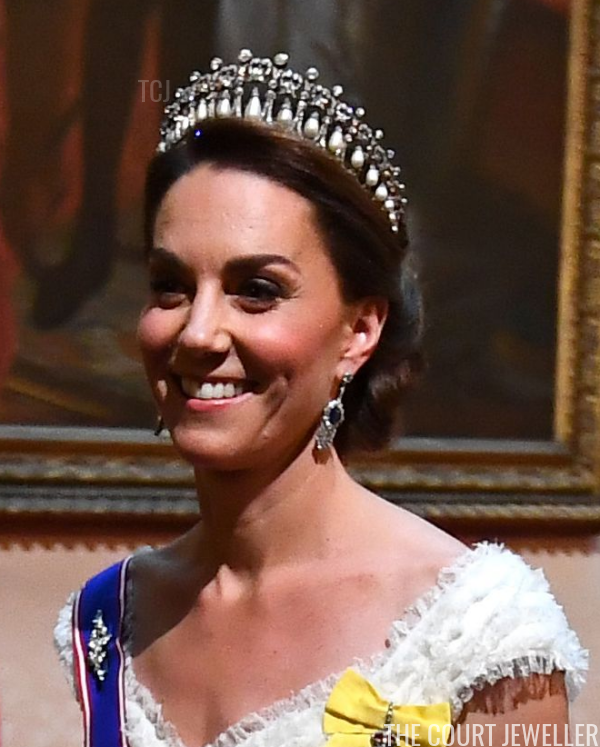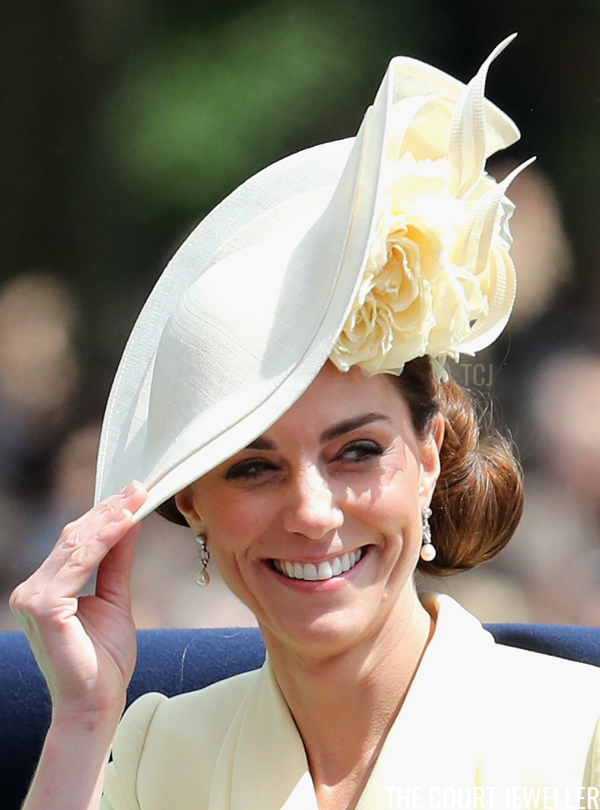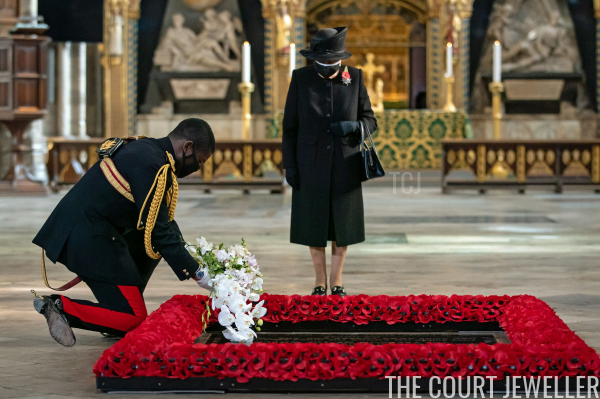 |
| AARON CHOWN/POOL/AFP via Getty Images |
The Japanese crown prince’s proclamation wasn’t the only big royal event that took place this weekend. The Windsors also gathered (socially distantly) for events in London to mark Remembrance Sunday and the centenary of both the Cenotaph and the Tomb of the Unknown Warrior.
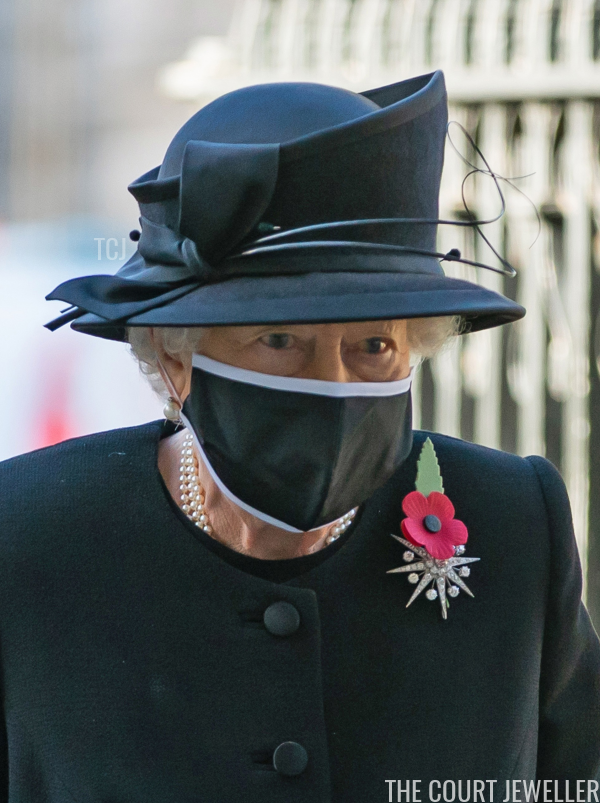 |
| Aaron Chown – WPA Pool/Getty Images |
The Queen’s commemorations actually began several days before Remembrance Sunday, on Wednesday, November 4. She made a private visit to Westminster Abbey for a special ceremony at the Tomb of the Unknown Warrior. November 11 marks the 100th anniversary of the burial of the Unknown Warrior in the Abbey, and because the Queen was not able to attend the larger service commemorating the anniversary, she made a private appearance instead. For the private visit, which was filmed and later televised, the Queen wore a face mask for the first time in public. She gathered her poppies with the Jardine Star Brooch.
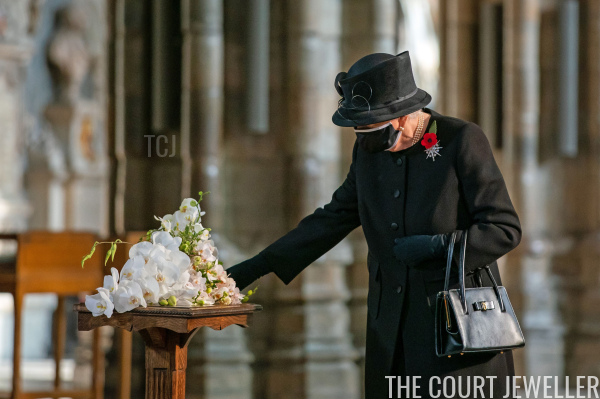 |
| AARON CHOWN/POOL/AFP via Getty Images |
Inside the Abbey, the Queen paid a special tribute to the Unknown Warrior. A replica of her wedding bouquet was created to be placed on the tomb. In 1947, Princess Elizabeth’s wedding bouquet was placed on the tomb, following a tradition begun by her mother in 1923. Every royal bride since has followed suit.
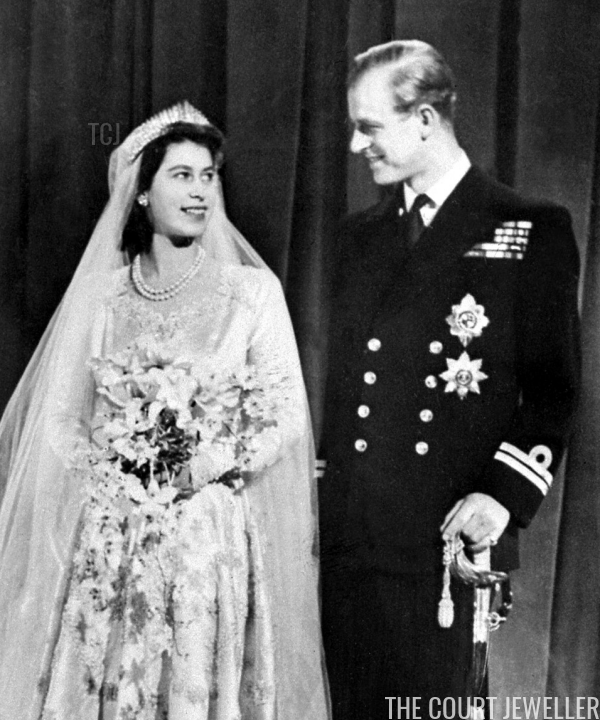 |
| AFP via Getty Images |
Here’s a look at the Queen’s bouquet on her wedding day in November 1947. After the official photos were taken, the bouquet was returned to the Abbey to be placed on the tomb. Buckingham Palace shared a touching film on social media explaining the tradition and showing the royal bouquets placed on the tomb.
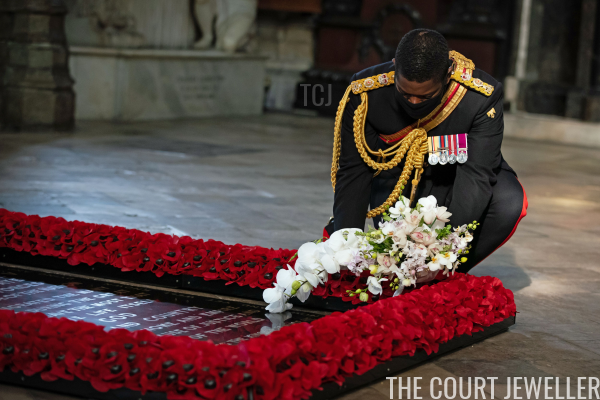 |
| AARON CHOWN/POOL/AFP via Getty Images |
After the Queen touched the replica bouquet, it was gently placed on the tomb by her equerry, Lieutenant Colonel Nana Kofi Twumasi-Ankrah.
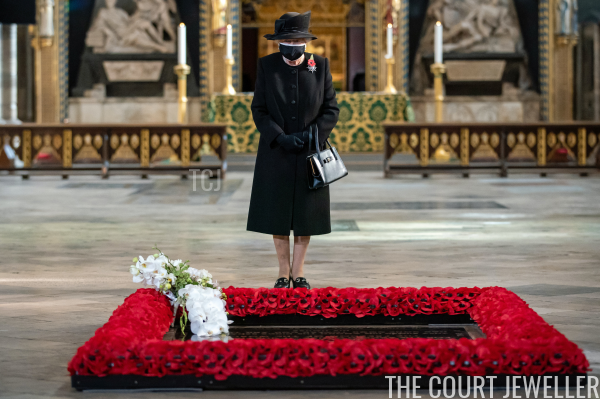 |
| Aaron Chown – WPA Pool/Getty Images |
It was a striking image, the Queen standing alone before the tomb in the empty Abbey. The unidentified British soldier buried in the tomb, who serves as a symbolic representative of all who fell in battle, died on a battlefield in Europe during World War I. His remains were exhumed in 1920 and escorted from France to England, where his casket was placed in a coffin made from oak timbers harvested from the grounds of Hampton Court Palace. King George V personally chose a medieval crusader’s sword from the Royal Collection to be affixed to the top of the coffin.
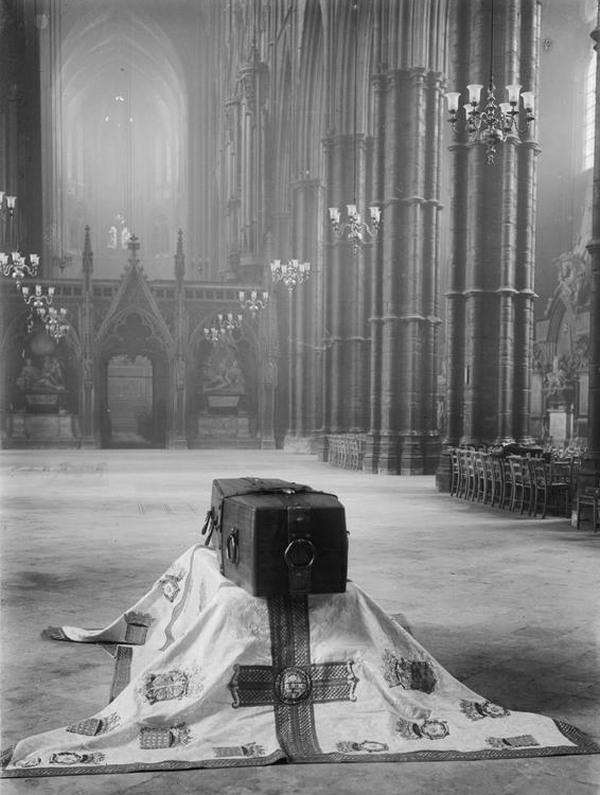 |
| The coffin of the Unknown Warrior in Westminster Abbey, before it was taken to France to receive the remains of the Unknown Warrior (Wikimedia Commons) |
The Unknown Warrior was buried in Westminster Abbey on November 11, 1920. (Simultaneously, an unknown French soldier was interred beneath the Arc de Triomphe in Paris.) The funeral procession traveled through London to the site of the Cenotaph. There, King George V waited with a large gathering of statesmen, military officers, and other dignitaries that included the Prince of Wales, the Duke of York, Prince Henry, and the Duke of Connaught, as well as the Archbishop of Canterbury. Queen Mary watched from a nearby balcony with Queen Alexandra, Princess Mary, and Queen Ena of Spain.
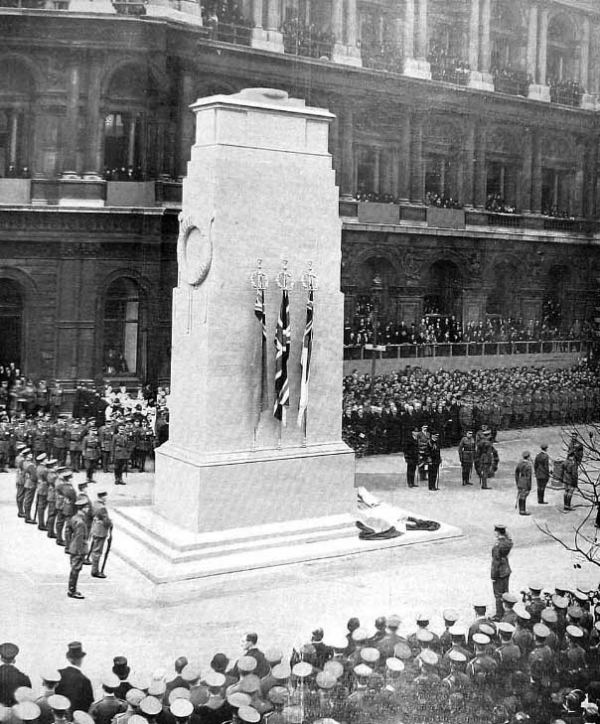 |
| The unveiling ceremony at the Cenotaph, 11 November 1920 (Wikimedia Commons) |
The new permanent stone Cenotaph, which replaced an earlier temporary monument, was unveiled by the King at the stroke of eleven o’clock. After a long moment of silence, the King and the princes moved to the head of the procession of mourners and continued on behind the gun carriage bearing the Unknown Warrior to the Abbey. Atop the coffin was a steel helmet and a wreath of laurel, placed there personally by the King. He had included a handwritten message with the wreath, which read: “In proud memory of those Warriors who died unknown in the Great War. Unknown, and yet well-known; as dying, and behold they live. George R.I.”
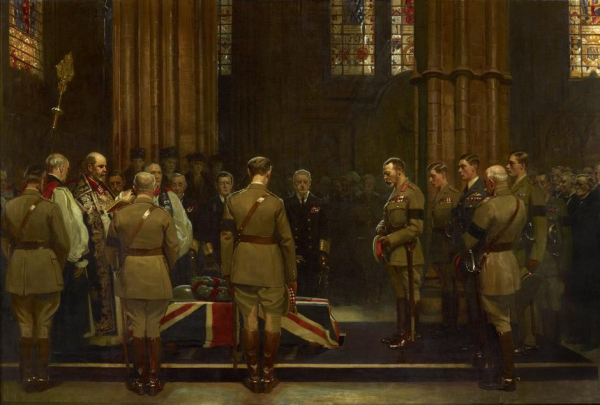 |
| Frank O. Salisbury’s painting of the burial of the Unknown Warrior, 1920 (Wikimedia Commons) |
Inside the Abbey, crowds of women waited, including a hundred widows who had lost their husbands and all of their sons in the war. Press reports noted that the women’s “mourning [was] lightened only by the flower and wreaths on their knees.” (After the burial, they placed bouquets and wreaths beside the tomb; some women took flowers from the bunches and threw them into grave.) Four queens were in attendance as well: Queen Mary, Queen Alexandra, Queen Maud of Norway, and Queen Ena of Spain. The coffin was brought into the Abbey with a guard of honor of 100 Victoria Cross recipients, and the unknown soldier was buried among kings and queens.
One writer who covered the procession and funeral for the Guardian allowed himself a moment of emotion in his report: “Who is it who lies there under the flag with field marshals and admirals for his pallbearers? Each member of this huge, quiet crowd gives him a different name, each a different face; he is husband, lover, brother, son to each, and many a woman here would give all her income from dreamland for a touch of his hand to her cheek.” As thousands of Britons filed past the grave after the funeral, the correspondent noted that the public tribute “had in it a feeling of comradeship, understanding, and cheerful goodwill. The unknown man had come back to his friends, and his friends greeted him in the way he would have liked best. Hail, but not farewell.”
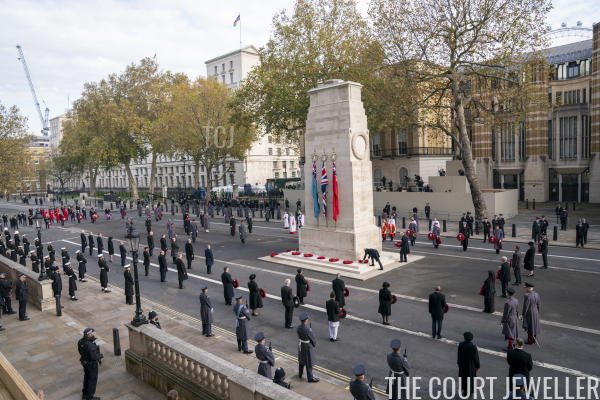 |
| Arthur Edwards – WPA Pool/Getty Images |
A hundred years later, in the midst of a global pandemic, the annual Remembrance Sunday ceremony was held at the Cenotaph on November 8, 2020. This year’s ceremony was closed to the public, but it was televised and can be streamed online as well.
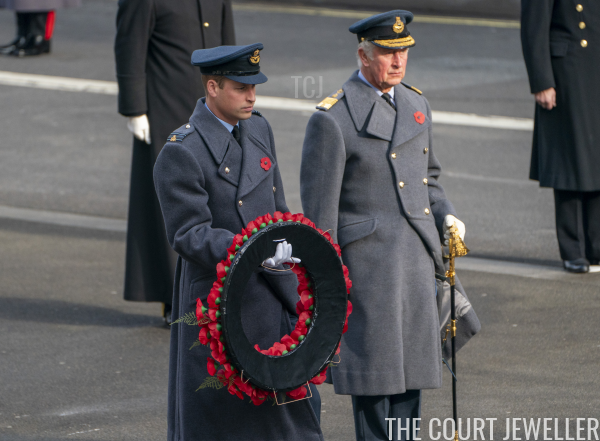 |
| Arthur Edwards – WPA Pool/Getty Images |
Members of the royal family gathered to participate in the commemorations. The Prince of Wales, the Duke of Cambridge, the Duke of Kent, the Princess Royal, and the Earl of Wessex all laid wreaths at the memorial during the ceremony.
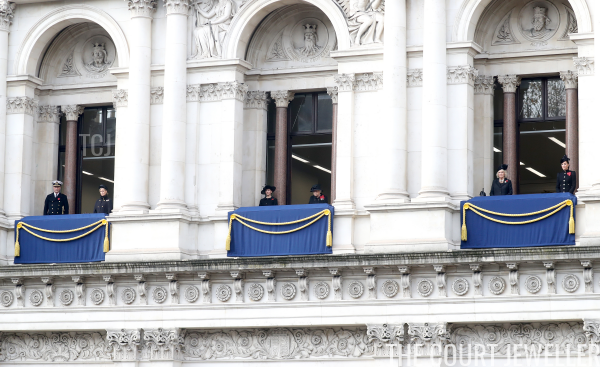 |
| Chris Jackson – WPA Pool/Getty Images |
The Queen, the Duchess of Cornwall, the Duchess of Cambridge, Sir Timothy Laurence, and the Countess of Wessex watched from the balcony above.
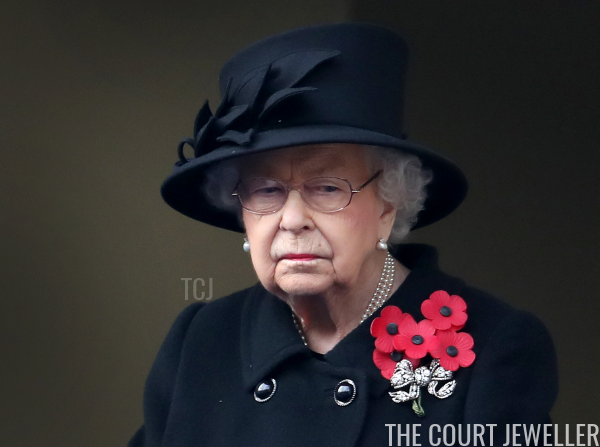 |
| Chris Jackson/Getty Images |
The Queen secured her poppies with the Dorset Bow Brooch for the occasion.
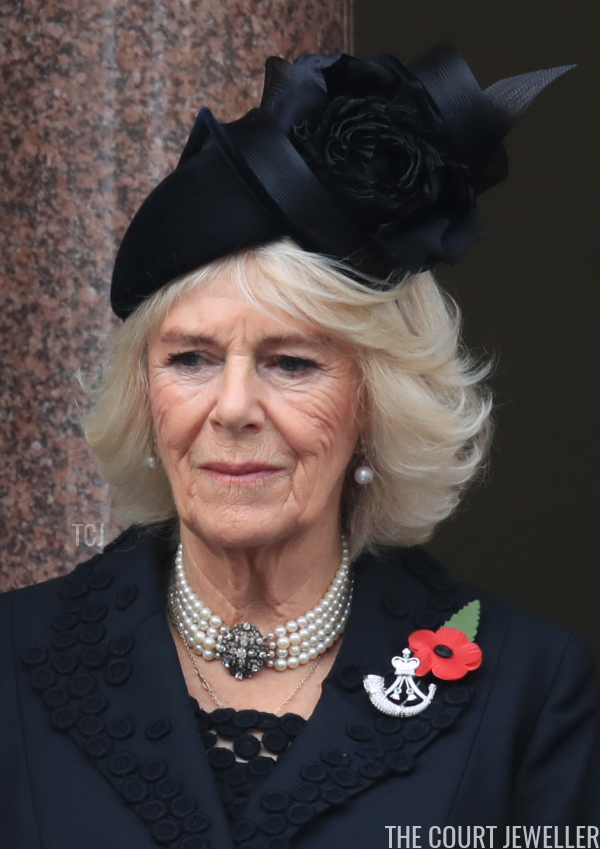 |
| Aaron Chown – WPA Pool/Getty Images |
With her signature pearl earrings and her pearl choker necklace with the large diamond clasp, the Duchess of Cornwall wore a diamond and emerald brooch designed after the cap badge of The Rifles. In July of this year, Camilla became Colonel-in-Chief of The Rifles, taking over from the Duke of Edinburgh, who had served in the role for almost seven decades. She’s also the Royal Colonel of the 4th Battalion of the regiment.
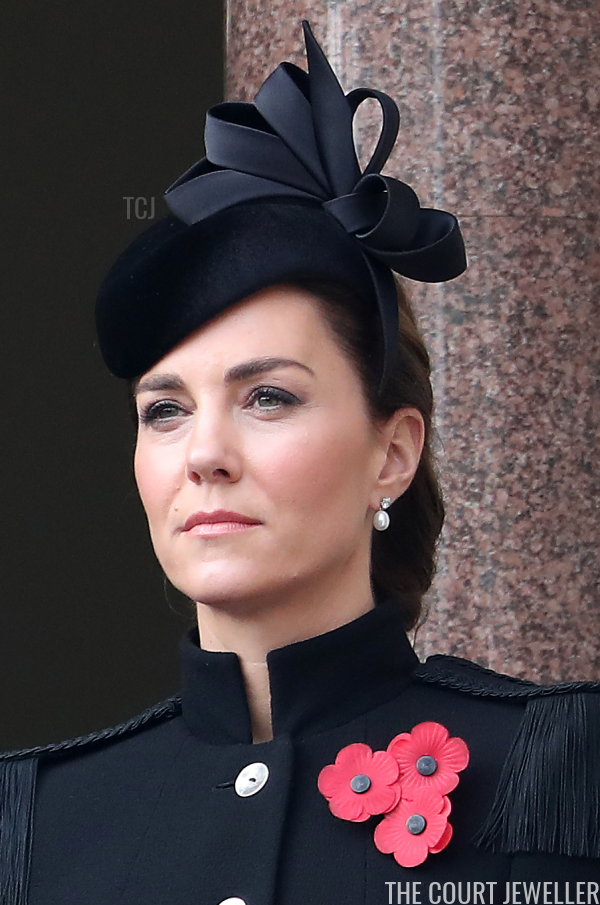 |
| Chris Jackson/Getty Images |
The Duchess of Cambridge kept her jewelry very simple for the occasion, wearing diamond and pearl earrings on loan to her from the Queen.
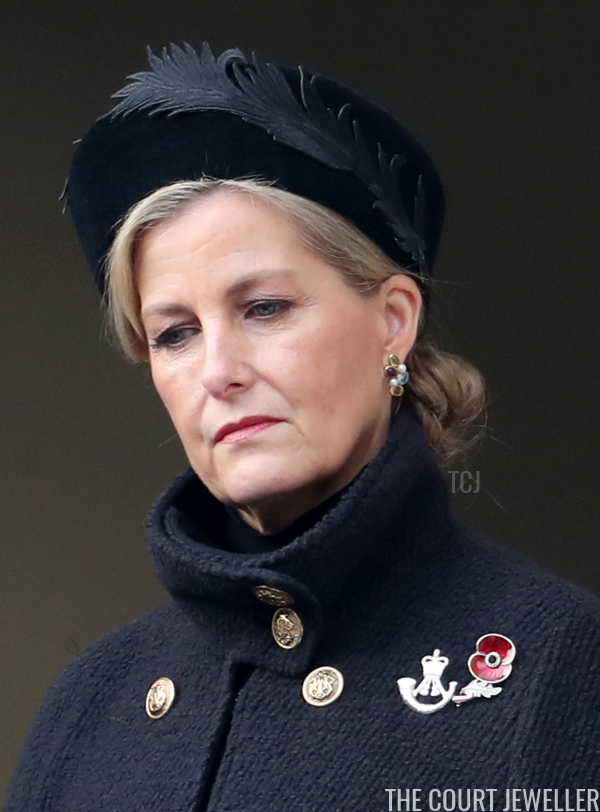 |
| Chris Jackson – WPA Pool/Getty Images |
Like her sister-in-law, the Countess of Wessex wore the cap badge of The Rifles. (She’s the Royal Colonel of the 5th Battalion.) Sophie also wore a poppy brooch and a pair of earrings set with multicolored gemstones.
The Prince of Wales and the Duchess of Cornwall also took part in two more recent commemorations. On Saturday, November 7, a scaled-back version of the Royal British Legion’s annual Festival of Remembrance was held. The Duchess of Cornwall, as Commodore-in-Chief of the Royal Naval Medical Service, attended to pay tribute to the medical personnel who have done so much for the public good this year. She wore the badge of the Royal Naval Medical Service, plus a poppy brooch, as she delivered her remarks.
The Prince of Wales paid tribute to members of the Armed Forces, both past and present, including veterans like Captain Sir Tom Moore who have worked to benefit others during the pandemic.
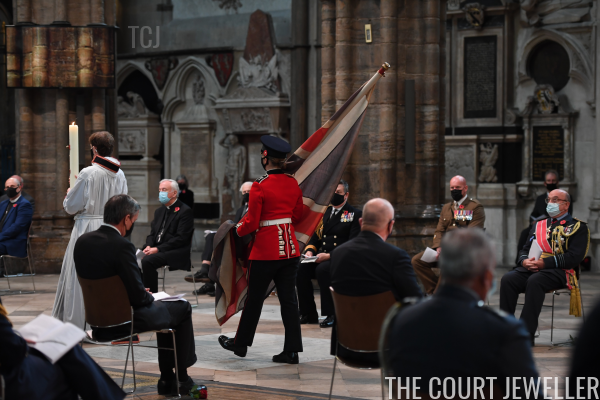 |
| Jeremy Selwyn-WPA Pool/Getty Images |
On Wednesday, the Prince of Wales and the Duchess of Cornwall attended an Armistice Day service at Westminster Abbey commemorating the 100th anniversary of the burial of the Unknown Warrior. During the ceremony, Rhian Morgan, a young member of the Welsh Guards, carried in the Padre’s Flag. This Union Jack is more than a century old, and it has incredible significance. It was owned by the Rev. David Railton (nicknamed “Padre”), the military chaplain who first proposed the idea of burying an unknown soldier in the Abbey. His flag was draped over the coffin of the Unknown Warrior in November 1920 during his funeral procession and after his burial. It’s rather remarkable to see the very same flag as part of the centenary commemorations of the moment.
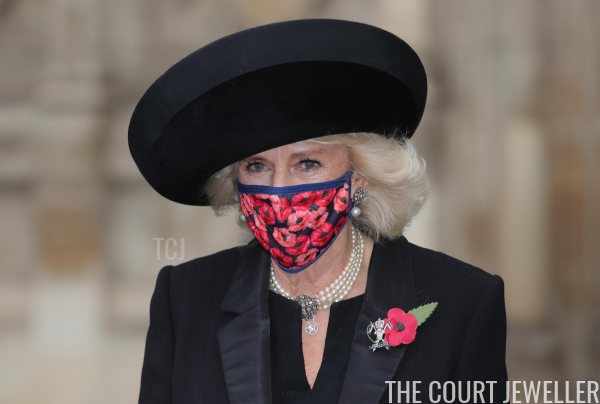 |
| AARON CHOWN/POOL/AFP via Getty Images |
For the service, Camilla wore a face mask printed with poppies. She also wore the badge of the Lancers, her late father’s WWII regiment.
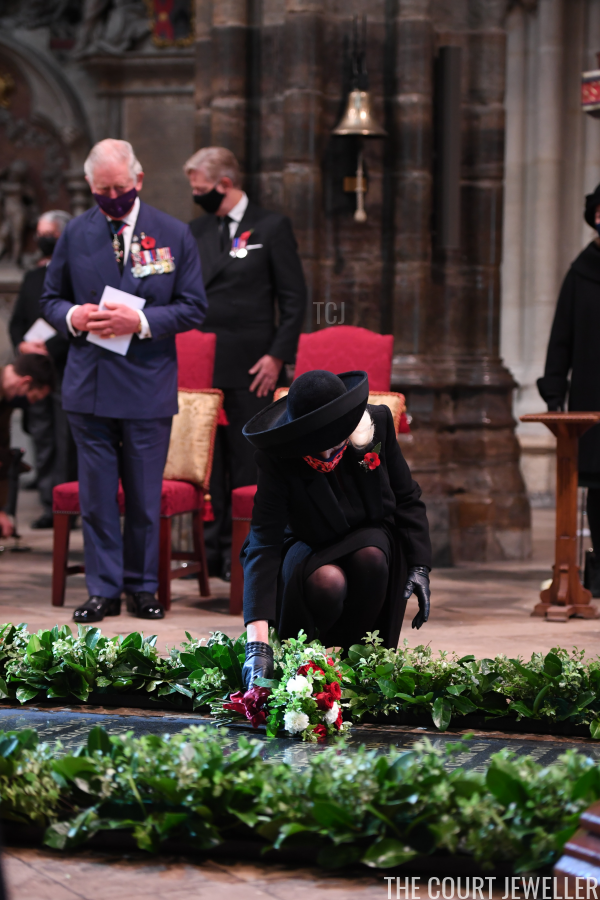 |
| Jeremy Selwyn-WPA Pool/Getty Images |
In an echo of the women who attended the funeral service a hundred years earlier, Camilla placed a bouquet on the tomb of the Unknown Warrior. (Here’s video of that part of the service.) In 2005, her bridal bouquet had also been placed on the tomb, following in the Queen Mother’s tradition. You’ll note that the usual border of red poppies around the tomb was replaced for the occasion. Members of the National Association of Flower Arrangers replaced it this week with a beautiful arrangement of laurel — a visual echo of the wreath that King George V had placed on the coffin a hundred years ago.
